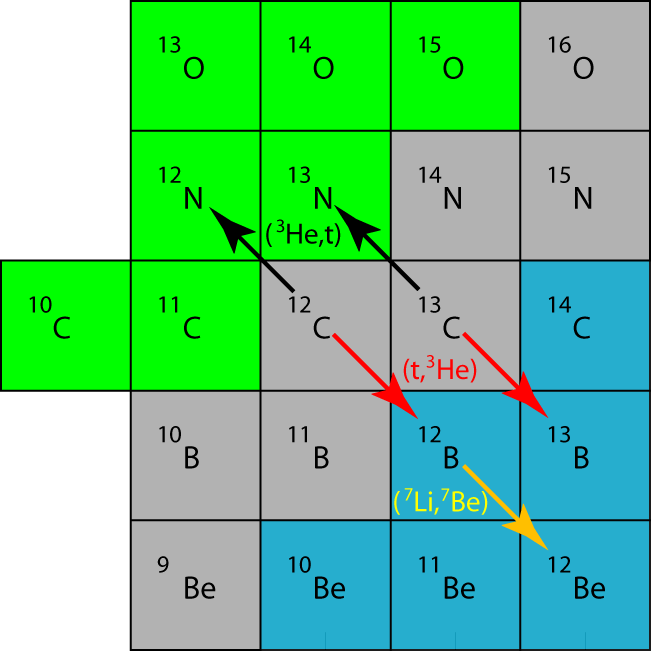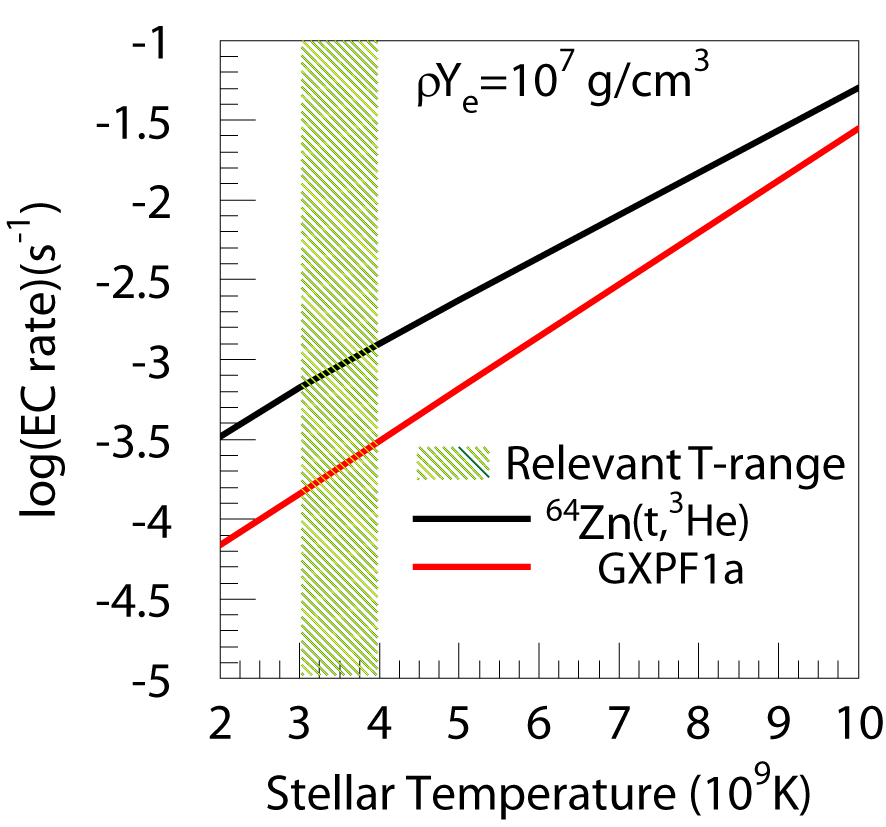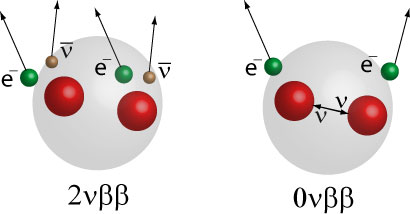One of the main goals of fundamental nuclear physics research is to understand what forces bind nucleons into nuclei. Many different types of experiments are performed to learn about different aspects of those forces. Experiments on rare isotopes are particularly helpful, as it becomes possible to isolate particular features of the nuclear forces that are not easily studied in stable nuclei.
Charge-exchange reactions are very useful for studying the structure of nuclei because particular components of the response function, that are not easily accessible through other means, can be selectively probed. Of particular interest for such studies are so-called Gamow-Teller transitions, for which information can be extracted from the data in a model-independent manner. Such data are very important for testing state-of-the-art theoretical models of nuclei and nuclear forces. In addition, these data have very important applications, for example in astrophysics and neutrino physics.








